Exploring French Wheaten Marans chicken history and origin, physical traits, egg production, care and maintenance, health and disease management, price, and their presence in poultry shows.
French Wheaten Marans Chicken History and Origin
The French Wheaten Marans chicken, scientifically known as Gallus gallus domesticus, traces its roots back to the small town of Marans in western France. This breed emerged in the early 20th century through the selective breeding.
Breeding Background
The Marans breed, including the French Wheaten Marans, was indeed developed by crossing local French hens with Croad Langshans, Brahmas, and fighting gamecocks.
French Wheaten Marans Chickens Appearance
French Wheaten Marans chicken Colors
French Wheaten Marans have a distinctive wheaten coloration. Hens display a golden wheat color with lighter underbellies, while roosters have reddish-golden hackles and saddle feathers with dark brown or black tails and wings.
Comb Type and Wattles
They feature a medium-sized, single comb that is straight and evenly serrated. The wattles are medium length, rounded, and red, matching the comb.
Eye Color and Beak Shape
These chickens have rich, reddish-bay eyes that stand out against their plumage. Their beaks are slightly curved and sturdy, typically horn or yellowish in color.
Size and Weight
French Wheaten Marans are medium to large-sized chickens. Roosters weigh between 7 to 8 pounds (3.2 to 3.6 kg), and hens weigh around 6 to 7 pounds (2.7 to 3.2 kg).
French Wheaten Marans chicken Shape
They have a compact, well-proportioned body with a broad chest and a slightly upward tail. Their strong, feathered legs add to their robust appearance.
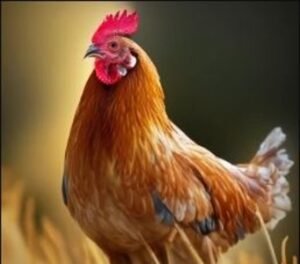
French Wheaten Marans Chicken Traits
Hardy and Adaptable
French Wheaten Marans chicken are hardy and adaptable birds, able to thrive in various climates. Their resilience to common poultry diseases minimizes the need for extensive health management.
Friendly Disposition
These chickens are known for their calm and friendly nature, making them great pets. They get along well with other chickens and humans alike, enhancing the poultry-keeping experience.
Excellent Foragers
French Wheaten Marans excel at foraging, making them ideal for free-range farming. Their ability to find food in their environment reduces feed costs and promotes sustainable farming practices.
French Wheaten Marans chicken Egg Production
French Wheaten Marans are prolific layers, producing 150-200 eggs per year. Their high-quality eggs are sought after for their rich flavor and deep brown color.
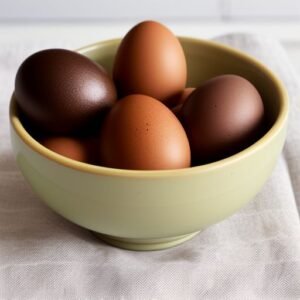
French Wheaten Marans Chickens Eggs
Laying Age
French Wheaten Marans typically start laying eggs at around 5 to 6 months of age. Although their egg production may decrease slightly as they age, they continue to lay efficiently for several years.
French Wheaten Marans chicken Egg Colors
The eggs of French Wheaten Marans are renowned for their deep, dark brown color, often likened to “chocolate” eggs.
French Wheaten Marans chicken Egg Production Per Year
On average, a French Wheaten Marans hen can produce between 150 to 200 eggs annually. However, actual production may vary depending on factors such as diet, care, and environmental conditions.
Factors to maintain/increase egg production, while knowing Mystic Marans.
French Wheaten Marans chicken Egg Quality and Benefits
Nutritional Value
Rich in Protein: French Wheaten Marans eggs provide a generous dose of protein, essential for building and repairing tissues, keeping you strong and energized.
Abundant in Vitamins and Minerals: These eggs are bursting with essential vitamins like A, D, E, and various B vitamins, along with important minerals like calcium, phosphorus, and iron, promoting overall health and vitality.
Wholesome Addition to Your Diet: Including French Wheaten Marans eggs in your meals ensures you’re getting a nutritious boost, supporting your well-being from the inside out.
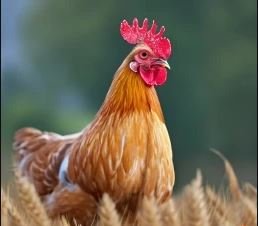
Market Demand and Economic Value
Premium Pricing: Thanks to their unique appearance and superior nutritional profile, French Wheaten Marans eggs fetch a premium price in the market, reflecting their exceptional quality and desirability.
Lucrative Opportunity for Farmers: For small-scale farmers and backyard chicken enthusiasts, raising French Wheaten Marans chickens can be a profitable venture, offering a valuable source of income.
Appealing to Health-Conscious Consumers: With their reputation for health benefits and rich flavor, French Wheaten Marans eggs are a sought-after choice among health-conscious consumers, ensuring a steady demand and promising market prospects.
10 prolific egg-laying chickens.
French Wheaten Marans chicken Health and Disease Management
Common Health Issues
While French Wheaten Marans are generally hardy birds, they can still be susceptible to several common poultry diseases, including:
Coccidiosis: A parasitic disease affecting the intestinal tract, typically caused by protozoa of the genus Eimeria. It can lead to diarrhea, dehydration, and in severe cases, death.
Respiratory Infections: These may include infectious bronchitis and avian influenza, which can affect the respiratory system, causing symptoms such as coughing, sneezing, nasal discharge, and difficulty breathing.
Parasites: French Wheaten Marans may also be prone to infestations of external parasites such as mites and lice, as well as internal parasites like worms, which can lead to discomfort, irritation, and poor health if left untreated.
Signs and Symptoms to Watch For
Lethargy and Reduced Activity: Chickens affected by illness may appear lethargic, spending more time resting and showing reduced interest in normal activities.
Loss of Appetite: A decrease in appetite or refusal to eat is a common sign of illness in chickens and should be monitored closely.
Respiratory Distress: Labored breathing, coughing, sneezing, and nasal discharge are indicators of respiratory infections that require immediate attention.
Diarrhea or Abnormal Droppings: Changes in the consistency, color, or frequency of droppings may signal underlying health issues such as digestive disorders or parasitic infections.
Feather Loss or Poor Feather Condition: Infestations of external parasites like mites or lice can cause feather loss, while internal parasites may lead to poor feather condition due to nutrient depletion and overall weakness.
Preventative Measures
Vaccination and Health Checks
If you’re wondering how best to protect your cherished French Wheaten Marans, consider incorporating the following proactive measures:
Regular Vaccination: Collaborate with a qualified veterinarian to devise a vaccination schedule tailored to your flock’s specific needs. Vaccines bolster the immune system, offering crucial protection against prevalent poultry diseases such as coccidiosis and avian influenza.
Health Checks: Schedule routine health assessments with your veterinarian to proactively monitor the health status of your chickens. Regular check-ups enable early detection of any underlying health issues, allowing for timely intervention and treatment.
Cleanliness and Biosecurity Practices
Maintaining a hygienic and biosecure environment is paramount to preventing disease outbreaks and preserving the health of your French Wheaten Marans.
Clean Living Spaces: Regularly cleaning and disinfecting your chicken coop, nesting boxes, and feeding areas eliminates harmful pathogens and parasites that can compromise your flock’s health.
Implement Biosecurity Measures: Implementing stringent biosecurity protocols minimizes the risk of disease introduction and spread within your flock. By limiting access to your chicken coop and practicing strict hygiene measures, you mitigate the likelihood of exposure to infectious agents. This proactive approach reduces the incidence of disease outbreaks.
French Wheaten Marans chicken Care and Maintenance
Daily Care Routine
Feeding and Watering Schedule: Provide a balanced diet comprising quality poultry feed, grains, and occasional treats to meet their nutritional needs. Fresh water should be readily available at all times.
Food for chickens in summer and winter.
Cleaning and Maintenance Tasks: Make it a habit to clean feeders and waterers daily, check for eggs, and inspect the coop for any signs of damage or irregularities.
Weekly Cleaning and Maintenance
Remove Soiled Bedding: Weekly, remove soiled bedding from the coop and nesting boxes to maintain cleanliness and prevent the accumulation of waste.
Clean Surfaces: Wipe down surfaces within the coop to remove dust and debris, ensuring a hygienic living environment for your chickens.
Replenish Nesting Materials: Provide fresh nesting materials such as straw or wood shavings to keep nesting boxes clean and comfortable for egg-laying.
Monthly Deep Cleaning
Deep Clean of the Coop: Once a month, conduct a deep clean of the coop, including disinfecting surfaces, nesting boxes, and equipment. This helps eliminate harmful bacteria and parasites, reducing the risk of disease transmission within the flock.
Seasonal Care Adjustments
Winter: During colder months, ensure the coop is well-insulated to provide adequate warmth for your chickens. Offer extra bedding to help retain heat and protect your flock from the chill.
Summer: In hot weather, provide shade and ventilation to prevent overheating. Ensure your chickens have access to cool, fresh water at all times to stay hydrated.
Cost of Raising French Wheaten Marans chicken
Initial Costs: Purchasing chicks or adult birds can range from $5 to $15 per bird, depending on age and quality. Building a coop may cost between $200 to $500, while feeders and waterers typically range from $10 to $30 each.
Ongoing Costs: Budget for feed, which can amount to approximately $15 to $20 per month for a small flock of 4 to 6 chickens. Bedding costs vary but average around $5 to $10 per month. Also keep in mind, anticipate expenses for routine health care, such as vaccinations and parasite control.
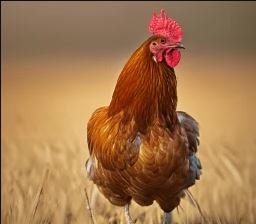
Comparison with Other Breeds
French Wheaten Marans have a higher initial cost, yet their quality eggs and friendly nature make them more cost-effective in the long run.
Market Value of Eggs and Meat
Imagine the demand for those rich, dark-brown eggs – they’re like culinary treasures! These eggs fetch premium prices thanks to their exquisite flavor and popularity. And let’s not forget about their meat – tender and flavorful, it’s another valuable asset to consider.
Business Opportunities in Breeding and Sales
Ever thought about venturing into breeding and selling French Wheaten Marans? With their unique traits and growing popularity, they’re a hot commodity in the poultry world.
French Wheaten Marans in Poultry Shows
Show Standards
Want to steal the spotlight at poultry shows? Your French Wheaten Marans chicken need to be top-notch in body shape, feather color, and comb type. It’s all about that perfect presentation!
Judging Criteria
Impress the judges by flaunting overall health, flawless condition, and impeccable conformation. Think feather finesse, color consistency, and just-right body proportions. It’s all about making a lasting impression!
Preparing for Shows
Training and Grooming Tips
Training: Get your feathered friends accustomed to human interaction by giving them plenty of handling time.
Grooming: Keep those feathers looking sharp and give nails and beaks a tidy trim if necessary. A little grooming goes a long way!
Strategies for Success
Eager to snag that trophy? Get a head start by prepping your birds well in advance. Whip them into tip-top shape and introduce them to the glamorous world of poultry shows ahead of time. It’s all about making a grand entrance!
Conclusion
Ready to wrap up your journey into the world of French Wheaten Marans chicken? These charming chickens aren’t just your average flock – they’re prized for their stunning appearance, prolific egg-laying, and friendly demeanor. From learning about their rich history to mastering the art of poultry showmanship, you’ve gained valuable insights into what makes these birds truly exceptional. Whether you’re considering raising them for eggs, meat, or simply as delightful companions, French Wheaten Marans offer a rewarding experience for poultry enthusiasts of all levels. So why wait? Get into the world of French Wheaten Marans and embark on a feathered adventure like no other!
How many eggs do French Wheaten Marans lay?
French Wheaten Marans typically lay between 150 to 200 eggs per year.
Are French Wheaten Marans friendly?
Yes, French Wheaten Marans are known for their friendly and calm nature, making them excellent pets.
Where to find French Wheaten Marans for sale?
You can find French Wheaten Marans for sale from reputable breeders, hatcheries, poultry shows, and online marketplaces.
What are French Wheaten Marans chickens colors?
French Wheaten Marans chickens are primarily golden wheaten in color, with hens displaying a lighter underbelly and roosters featuring reddish-golden hackles and dark tails.
What is the price of French wheaten Marans chicken?
The price of French Wheaten Marans chickens varies based on factors like age, quality, and seller. Chicks typically range from $5 to $15, while adults can cost $20 to $50 or more, depending on breed quality and breeder reputation.
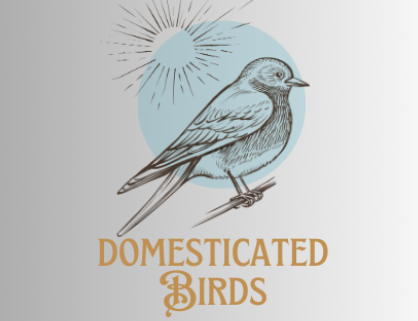

быстрый вывод из запоя ростов быстрый вывод из запоя ростов .
вывод из запоя дешево ростов http://vyvod-iz-zapoya-rostov16.ru .
вывод из запоя ростов-на-дону вывод из запоя ростов-на-дону .